DSC PowerG - Technology Overview Dated 08.15.18
Related Products
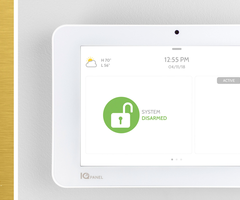

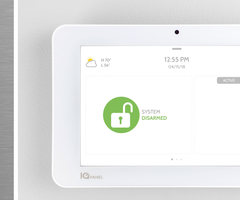
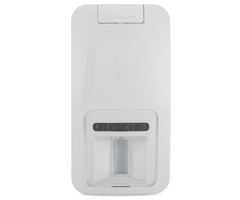


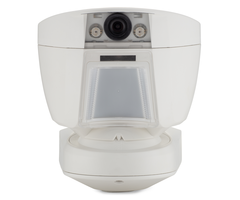


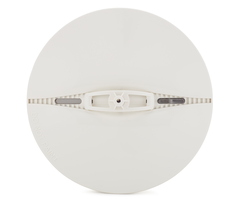
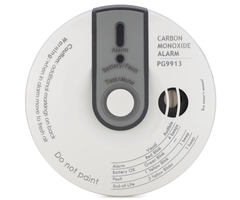
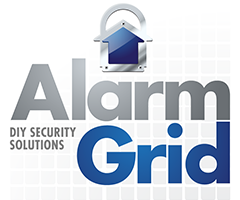
Related Categories
Document Transcript
the Power of
Technology
Overview Contents
Introduction .....................................................................................
3
Frequency Hopping Spread Spectrum .............................................
4
Full Two-Way Synchronized TDMA Communication .........................
5
Secured Wireless Communication with AES Encryption ...................
6
Unmatched Benefits with a Breakthrough Technology .....................
7
Summary .........................................................................................
8
Introduction
Today, wireless communication is part of daily life. Users have gained full confidence
in wireless performance and rely on numerous wireless devices used in their home
and work lives. Wireless communication is everywhere we turn and it affects
everything in multiple ways.
With intrusion alarm systems, this trend is no different. The shift from hard-wired to
wireless alarm systems has been rapid and now wireless technology is increasingly
accepted for security applications in residential and business premises. Security
installers are standing behind wireless alarm systems, allowing for consumer adoption
and insurance companies’ acceptance of technologies that had once been considered
not trustworthy enough for security.
An additional driver for wireless security is the growth of the connected home.
As more homes and businesses adopt networks allowed varying degrees of
automation, the demand for wireless security devices is increasing. A study released
by Radiant Insights in mid-2015* projected that worldwide sales of security devices for
the connected home would grow from about $1.2 billion in 2014 to over $7.5 billion
by 2021.
PowerG Technology is one of the leading technologies targeted to this growing
market segment. A proprietary, tree topology protocol developed by Tyco Security
Products, it is optimized specifically for the monitoring and control of battery-operated
devices for security and safety applications for homes and businesses. As such,
it fully addresses the key requirements for wireless security systems: reliability,
performance, privacy, vulnerability, usability, and maintenance.
© Tyco 2016. This document contains Tyco proprietary information, as well as publicly available information. Both may be subject to
change without notice. All rights reserved. Reproduction or distribution other than for intended purposes is prohibited, without the
prior written consent of Tyco.
The trademarks and service marks of Tyco, including the Tyco mark and logo and PowerG are the exclusive property of Tyco, and
may not be used without permission. All other marks ar e the property of their respective owners. Created 04/2016.
* http://www.radiantinsights.com/research/security-devices-for-connected-homes-industry
3 Frequency Hopping Spread Spectrum
Frequency Hopping Spread Spectrum (FHSS) derives from military radio technology where it was designed
to be secure and reliable under adverse battle conditions. FHSS changes the frequency of a transmission
at intervals faster than an intruder can retune a jamming device. With FHSS, the bandwidth is divided
into multiple frequency channels. Once a wireless connection is established and time-synchronization
is gained, the receiver and transmitter agree on one of practically infinite frequency hopping sequences.
These sequences are both encrypted and time-dependant. Based on the current time and a mathematical
calculation, both the receiver and transmitter hop to the next frequency channel in the sequence at the
same time. Unless the system time, the system encryption key and the proper calculation are all known,
the communication cannot be tracked. As a result, unauthorized interception of, or eavesdropping on, a
communication is virtually impossible.
The PowerG network uses Frequency Hopping Spread Spectrum technology. The network continuously
hops between multiple frequencies spread over the entire assigned frequency band: 8 hopping frequencies
in the 433-434MHz bands, 4 hopping frequencies in the 868-869MHz bands, and 50 hopping frequencies
in the 912-918MHz bands.
The network does not remain in a single frequency but switches frequencies 64 times a second, using an
encrypted unique pseudo-random sequence known only to devices enrolled to the PowerG panel. The
pseudo-random sequence differs from one PowerG panel to another.
By using FHSS technology, the PowerG network successfully overcomes intentional and un-intentional
interferences and jamming. Multiple PowerG-based alarm systems can operate in the same vicinity without
interfering with each other. Robustness and reliability of the wireless network increases dramatically.
An analogy to FHSS is as follows: Imagine a car driven in a multi-lane highway. As a strategy, the driver
continuously and rapidly changes lanes. If one of the lanes is blocked (by road-works or a road accident)
the car will avoid the disturbance because it is changing lanes continuously. The following figure illustrates
the FHSS concept.
Full Two-way Synchronized TDMA Communication
TDMA (Time Division Multiple Access) is a digital transmission technology that allows a number of users to
access a single radio-frequency (RF) channel without interference by allocating unique time slots to each
user within each channel.
TDMA Frame Structure
4
5
The users transmit in rapid succession, one after the other, each using their own time slot. This allows
multiple users to share the same transmission medium (e.g. radio frequency channel) while using only
part of its channel capacity. Multiple users, therefore, can share the same frequency channel without
causing interference because the signal is divided into multiple timeslots, where each timeslot acts as
a separate communication path. TDMA relies upon the fact that the signal has been digitized - divided
into milliseconds-long packets. It allocates a single frequency channel for a short time and then moves to
another channel. TDMA is used in digital cellular systems such as GSM.
Similar to the GSM cellular network, each device in the PowerG network is allocated unique timeslots
for full two-way data transmission with the panel, streamlining communication and increasing channel
efficiency. This eliminates RF collisions and assures that no alarm or supervision message is lost.
TDMA technology allows a low-latency, low-power downlink channel, which is vital to minimizing power
usage while maintaining required performance. PowerG-powered devices are mostly dormant; they wake
up frequently and periodically, switching on their receiver for a fraction of a millisecond, during which
downlink messages can be sent. In this way, they are instantly responsive to a transmitted message, with
minimum awake time. Sleepy PowerG devices are kept time-synchronized to within +/- 30 μSEC, with
an energy consumption footprint of less than 2 μA. This response time is ideally suited to provide the
services needed for the full range of home/business security and safety applications, including heavy-duty
applications, for example battery operated sirens that need to be activated within a fraction of a second.
In this way, TDMA technology provides the devices with extended battery life since the device is only
transmitting a portion of the time. Repeated transmissions are also avoided, resulting in an energy-saving
network.
An analogy to the PowerG synchronized TDMA communication is as follows: imagine a meeting attended
by several people. When communication is not synchronized, participants speak simultaneously, creating
interferences and communication blocks. On the other hand, if the meeting is managed by a moderator
who controls who speaks by a complex set of rules and a rigid clock, each participant restricts his or her
speaking to a specific timeslot during which everyone else remains silent. The meeting is then conducted
effectively.
Band
Time
Frequency
Bad Ho
p
Good
Hops
Bad fr
equency
(interfere
ncy)
10101010111010101
Data str
eam is divided
into frames
Frames divided into time slots.
Each device is allocated one slo
t.
Time slots contain data.
Frequency hopping avoids blocking and interferences Secured Wireless Communication with AES Encryption
AES (Advanced Encryption Standard) is a symmetric (private key) encryption standard originally published
as Rijndael (after its inventors Rijmen and Daemen) in 1998 and adopted by the U.S. government in
2000. In 2001, AES was chosen by NIST (National Institute of Standards and Technology) as the Federal
Information Processing Standard (FIPS), also known as FIPS197. In 2003, the National Security Agency
(NSA) stated that AES was secure enough to protect its information at the secret and top-secret levels.
AES consist of three block ciphers. Each cipher has a 128-bit block size with three different key sizes
of 128, 192, and 256 bits. The algorithm is based on permutations and substitutions. Permutations
are rearrangements of data, and substitutions replace one unit of data with another. AES performs
permutations and substitutions using several different techniques. The AES cipher repetitively performs
a number of transformation rounds, thus converting the input plain data into an output of cipher data.
There are several processing steps for each round, with one round that relies exclusively on the encryption
key. Then, a set of reverse rounds are applied to convert the cipher data back into plain data. The AES
encryption uses a single key which is a shared secret between the sender and receiver to encrypt and
decrypt data. An analogy is a locked mailbox without a mail slot. Anybody who wants to leave or read a
message needs to have a key to the mailbox.
The PowerG network employs the proven AES-128 (128 bit key) advanced encryption algorithm for
correct message identification and for protecting the alarm system from code grabbing and from message
substitution by hackers and other attackers. AES-128 uses 10 rounds with each round performing several
transformations.
AES is a well-proven encryption algorithm that guarantees strong authentication and encryption security
for the PowerG wireless network.
Unmatched Benefits with a Breakthrough Technology
The combination of technologies—Frequency Hopping Spread Spectrum (FHSS), synchronized TDMA
communication, and AES—gives PowerG immense strength to deliver a new, advanced alarm system
that provides unmatched advantages for professional installers, central monitoring stations and end-users
alike. In fact, PowerG provides the convenience of a wireless network with reliability closer than ever to
that of a hard-wired one.
•
Energy-saving network
Each device continuously measures communication quality and automatically sets its transmission
power to the minimum required for reliable communication with the panel. Full, two-way synchronized
communication ensures minimum, short transmissions. These significantly extend the battery life of
PowerG devices to exceed 8 years. Furthermore, on-site maintenance visits are reduced due to the
system’s capability to support numerous functions remotely.
•
Unmatched robustness and reliability
Signals continuously hop between channels in a random sequence, avoiding interferences and
jamming. TDMA communication ensures RF collisions are eliminated.
•
Surpasses most industry security standards
The PowerG network employs the proven AES-128 encryption algorithm, protecting the system from
code grabbing and message substitution by hackers and other attackers.
•
Huge transmission range
PowerG employs advanced radio and diversity antenna technologies that, when combined with
frequency hopping and synchronized TDMA communication, result in an extremely large range—far
greater than the industry standard. This enables repeater-free installations even on very large premises.
Tests reveal a line of sight communication range greater than 2km (6,000ft)*. By adding a PowerG
repeater the range can be doubled.
•
Support for advanced applications
PowerG was designed to handle a substantially high bandwidth, enabling the network to transmit
large amounts of data in a short time. This provides the infrastructure for solutions such as installations
with numerous devices, audio and video applications. Additionally, as a proprietary technology, PowerG
supports mobile apps developed specifically to provide real-time visibility and control of PowerG-
power home and business security alarm systems.
•
Advanced, time and money-saving toolset
The PowerG full two-way uplink and downlink data communication provides installers with powerful
tools, unmatched in our industry, that can save time and money on a daily basis. The toolsets
include: quick and easy installation with built-in link quality indicators on the devices; on-site and remote
configurations of devices and peripherals; cost-saving advanced on-site and remote diagnostics—the
system continuously diagnoses the RF environment and interferences at the site and provides (locally
and remotely) meaningful information to help understand and resolve problems; remote real time
testing and walk testing of the system.
* In actual installations, the range is reduced due to construction signal attenuation.
7
6
SubBytes ()
ShiftRows
Mixcolumns ()
Mix 4 columns ()
Mix 4 columns ()
Mix 4 columns (
)M
ix 4 columns ()
Addroundkey ()
16 input bytes
16 output bytes
AES Transformations Round Summary
While Frequency Hopping Spread Spectrum, TDMA communication and AES are not new technologies,
it is the implementation of all three within PowerG that makes this system so innovative and revolutionary.
This combination in Tyco’s intrusion alarm systems fully answers the urgent needs of our industry.
By creating an energy-saving, highly robust and reliable network and providing long transmission range,
an advanced, time-saving toolset, and support for advanced applications and mobile control, Tyco’s
PowerG-based intrusion alarm systems fully answer the urgent needs of our industry.
About TSP
Tyco Security Products and its leading brands conducts business in over 176 countries around the world,
in multiple languages and employs over 2,700 employees globally, including research and development,
marketing, manufacturing, sales, service and logistics teams in the Americas, Europe, the Middle East,
Africa, and Asia Pacific. Our products, built by developers from all product disciplines, consistently allow
customers to see more, do more, and save more across multiple industries and segments including
healthcare, government, transportation, finance, retail, commercial and residential. Worldwide, Tyco
Security Products helps protect 42% of Fortune 500 companies, transportation systems on five
continents, 37% of the world’s top 100 retailers, over two million commercial enterprises, thousands of
students in more than 900 educational facilities, and over five million private residences. Learn more about
Tyco Security Products at
www.tycosecurityproducts.com
© Tyco 2016. This document contains Tyco proprietary information, as well as publicly available information. Both may be subject to
change without notice. All rights reserved. Reproduction or distribution other than for intended purposes is prohibited, without the
prior written consent of Tyco.
The trademarks and service marks of Tyco, including the Tyco mark and logo and PowerG are the exclusive property of Tyco, and
may not be used without permission. All other marks ar e the property of their respective owners. Created 04/2016.
- Uploaded
















